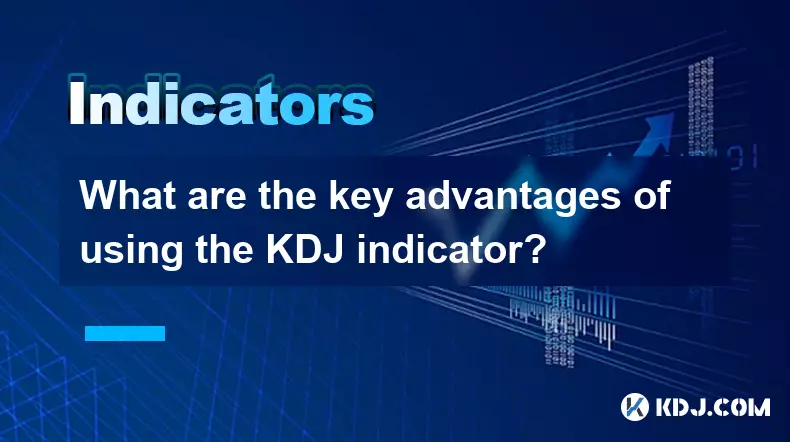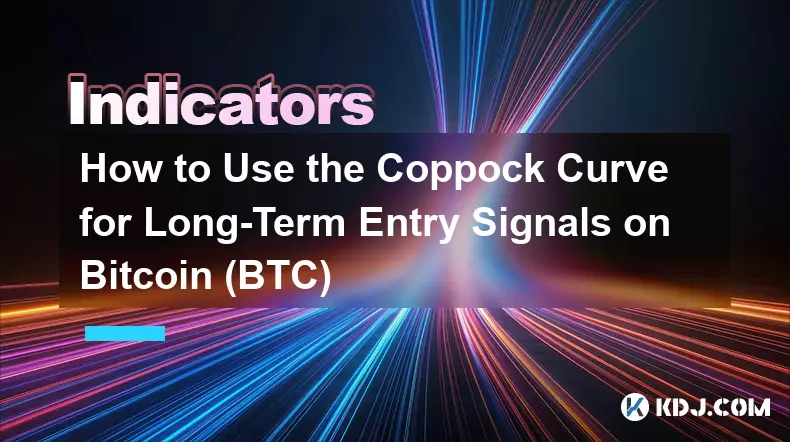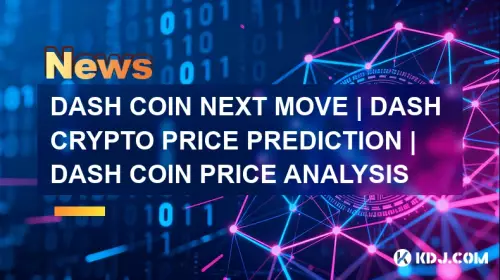-
 bitcoin
bitcoin $107015.826941 USD
-2.18% -
 ethereum
ethereum $3637.352324 USD
-5.18% -
 tether
tether $0.999831 USD
-0.02% -
 xrp
xrp $2.338078 USD
-6.23% -
 bnb
bnb $998.272150 USD
-6.97% -
 solana
solana $167.598257 USD
-10.12% -
 usd-coin
usd-coin $0.999863 USD
0.01% -
 tron
tron $0.282573 USD
-5.09% -
 dogecoin
dogecoin $0.169891 USD
-7.39% -
 cardano
cardano $0.557554 USD
-7.03% -
 hyperliquid
hyperliquid $39.914802 USD
-5.85% -
 chainlink
chainlink $15.414549 USD
-9.97% -
 bitcoin-cash
bitcoin-cash $510.361911 USD
-4.26% -
 ethena-usde
ethena-usde $0.999194 USD
-0.03% -
 stellar
stellar $0.282092 USD
-6.07%
What are the key advantages of using the KDJ indicator?
The KDJ indicator enhances crypto trading precision with its J line, offering early reversal signals and adapting well to volatile, ranging, or trending markets.
Oct 13, 2025 at 07:00 pm

Understanding the KDJ Indicator in Cryptocurrency Trading
The KDJ indicator, a refined version of the stochastic oscillator, has gained traction among cryptocurrency traders due to its sensitivity and adaptability. Unlike traditional oscillators that only consider price momentum, the KDJ introduces an additional dimension— the J line—which enhances signal accuracy. This makes it particularly effective in fast-moving digital asset markets where timing is critical.
Enhanced Signal Precision Through the J Line
1. The J line acts as a momentum trigger by measuring the divergence between the %K and %D lines, often signaling turning points before they appear on price charts.
- When the J line crosses above 100 or drops below 0, it indicates overbought or oversold extremes, offering early warnings for potential reversals.
- Traders use these J line spikes to anticipate sharp price swings common in volatile crypto assets like Bitcoin and Ethereum.
- The exaggerated movements of the J line help filter out minor fluctuations, reducing false signals during consolidation phases.
- Integration with candlestick patterns increases confidence in trade entries, especially when divergence aligns with bullish or bearish engulfing formations.
Adaptability Across Timeframes and Market Conditions
1. Short-term traders apply the KDJ on 15-minute or hourly charts to capture intraday swings in altcoins with high volatility.
- On daily or weekly timeframes, the indicator helps identify major trend shifts, such as the end of a prolonged bear market in decentralized finance (DeFi) tokens.
- In ranging markets, KDJ excels at highlighting bounce zones near support and resistance levels, enabling scalpers to execute precise buy-low, sell-high strategies.
- During strong trending phases, divergences between price action and the KDJ can warn of exhaustion, allowing position holders to secure profits ahead of corrections.
- Customizable parameters allow users to adjust sensitivity based on asset liquidity and average trading volume, making it suitable for both large-cap and micro-cap cryptocurrencies.
Integration with Other Technical Tools for Confirmation
1. Combining KDJ with moving averages enables traders to distinguish between genuine reversal signals and temporary pullbacks within a larger trend.
- When the KDJ exits oversold territory while the price breaks above a key moving average, it reinforces the validity of a bullish breakout.
- Pairing the indicator with volume analysis ensures that momentum shifts are backed by actual buying or selling pressure, minimizing whipsaw effects.
- Use alongside Bollinger Bands allows traders to confirm whether extreme KDJ readings coincide with price touching band edges, increasing predictive reliability.
- In Elliott Wave analysis, KDJ readings at wave transitions provide supplementary evidence for identifying impulse and corrective phases in crypto cycles.
Frequently Asked Questions
How does the KDJ differ from the standard Stochastic Oscillator?The primary distinction lies in the inclusion of the J line, which amplifies momentum signals by calculating the difference between the %K and %D lines multiplied by a factor. This added component makes the KDJ more responsive to sudden price changes, a crucial advantage in the rapid-fire environment of cryptocurrency trading where delays can result in missed opportunities.
Can the KDJ be used effectively in sideways crypto markets?Yes, the KDJ performs exceptionally well in range-bound conditions. Its ability to consistently identify overbought and oversold levels allows traders to systematically enter short positions near the top of the range and long positions at the bottom. This cyclical behavior matches the lateral movement typical of low-volatility periods in stablecoins or maturing blockchain projects.
What settings are recommended for crypto trading?A common configuration is (9, 3, 3), but many traders modify this to (14, 3, 3) for reduced noise on higher timeframes. For highly volatile altcoins, shorter periods like (5, 3, 3) may yield faster signals. Adjustments should consider the specific asset’s historical volatility and average session volume to optimize responsiveness without sacrificing reliability.
Is the KDJ suitable for automated trading systems?Absolutely. The mathematical clarity of the KDJ formula makes it ideal for algorithmic integration. Trading bots can be programmed to execute orders when the J line crosses predefined thresholds or when crossovers occur under specific volume conditions. Backtesting results show consistent performance across various crypto pairs, especially when combined with risk controls like stop-loss triggers.
Disclaimer:info@kdj.com
The information provided is not trading advice. kdj.com does not assume any responsibility for any investments made based on the information provided in this article. Cryptocurrencies are highly volatile and it is highly recommended that you invest with caution after thorough research!
If you believe that the content used on this website infringes your copyright, please contact us immediately (info@kdj.com) and we will delete it promptly.
- Milk Mocha's $HUGS: The Presale Meme Coin Redefining Community and Value
- 2025-11-04 17:50:02
- Dogecoin, Lyno AI, and Growth Potential: A New Era for Crypto?
- 2025-11-04 17:45:01
- DASH Price Surges Amid Aster Listing: Market Confidence Returns?
- 2025-11-04 17:45:14
- Crypto Price Predictions: DeFi Coins to Watch in 2026 – Will MUTM Outshine XRP?
- 2025-11-04 17:50:01
- Rare Coin Mania: The Red Coin Collectors Rush!
- 2025-11-04 17:55:02
- Shiba Inu, Blue Kachina, and a Message: What's the Buzz?
- 2025-11-04 17:55:02
Related knowledge

Technical analysis for crypto: using RSI and MACD to find trading signals.
Nov 03,2025 at 03:18pm
Decentralized Exchanges Are Reshaping Trading Dynamics1. Decentralized exchanges (DEXs) have gained significant traction by eliminating intermediaries...

The Best Exponential Moving Average (EMA) Settings for Crypto Swing Trading
Oct 25,2025 at 04:55pm
The Best Exponential Moving Average (EMA) Settings for Crypto Swing TradingSwing trading in the cryptocurrency market relies heavily on identifying tr...

How to Use the Coppock Curve for Long-Term Entry Signals on Bitcoin (BTC)
Oct 31,2025 at 03:01pm
Understanding the Coppock Curve in Bitcoin Analysis1. The Coppock Curve is a momentum indicator originally designed for stock market indices but has f...

A Beginner's Guide to Finding Divergence with the MACD on the Solana (SOL) Chart
Oct 26,2025 at 12:36pm
Understanding MACD and Its Role in Solana Trading1. The Moving Average Convergence Divergence (MACD) is a momentum indicator widely used in cryptocurr...

How to Use the Aroon Indicator to Identify New Trends in Cardano (ADA)
Oct 26,2025 at 10:18pm
Understanding the Aroon Indicator in Cryptocurrency Trading1. The Aroon indicator is a technical analysis tool designed to identify whether an asset i...

Trading the Ichimoku Cloud "Kumo Twist" for Ethereum (ETH) Reversals
Oct 27,2025 at 01:54am
Understanding the Ichimoku Cloud and Its Components1. The Ichimoku Cloud, also known as Ichimoku Kinko Hyo, is a comprehensive technical analysis tool...

Technical analysis for crypto: using RSI and MACD to find trading signals.
Nov 03,2025 at 03:18pm
Decentralized Exchanges Are Reshaping Trading Dynamics1. Decentralized exchanges (DEXs) have gained significant traction by eliminating intermediaries...

The Best Exponential Moving Average (EMA) Settings for Crypto Swing Trading
Oct 25,2025 at 04:55pm
The Best Exponential Moving Average (EMA) Settings for Crypto Swing TradingSwing trading in the cryptocurrency market relies heavily on identifying tr...

How to Use the Coppock Curve for Long-Term Entry Signals on Bitcoin (BTC)
Oct 31,2025 at 03:01pm
Understanding the Coppock Curve in Bitcoin Analysis1. The Coppock Curve is a momentum indicator originally designed for stock market indices but has f...

A Beginner's Guide to Finding Divergence with the MACD on the Solana (SOL) Chart
Oct 26,2025 at 12:36pm
Understanding MACD and Its Role in Solana Trading1. The Moving Average Convergence Divergence (MACD) is a momentum indicator widely used in cryptocurr...

How to Use the Aroon Indicator to Identify New Trends in Cardano (ADA)
Oct 26,2025 at 10:18pm
Understanding the Aroon Indicator in Cryptocurrency Trading1. The Aroon indicator is a technical analysis tool designed to identify whether an asset i...

Trading the Ichimoku Cloud "Kumo Twist" for Ethereum (ETH) Reversals
Oct 27,2025 at 01:54am
Understanding the Ichimoku Cloud and Its Components1. The Ichimoku Cloud, also known as Ichimoku Kinko Hyo, is a comprehensive technical analysis tool...
See all articles










































































